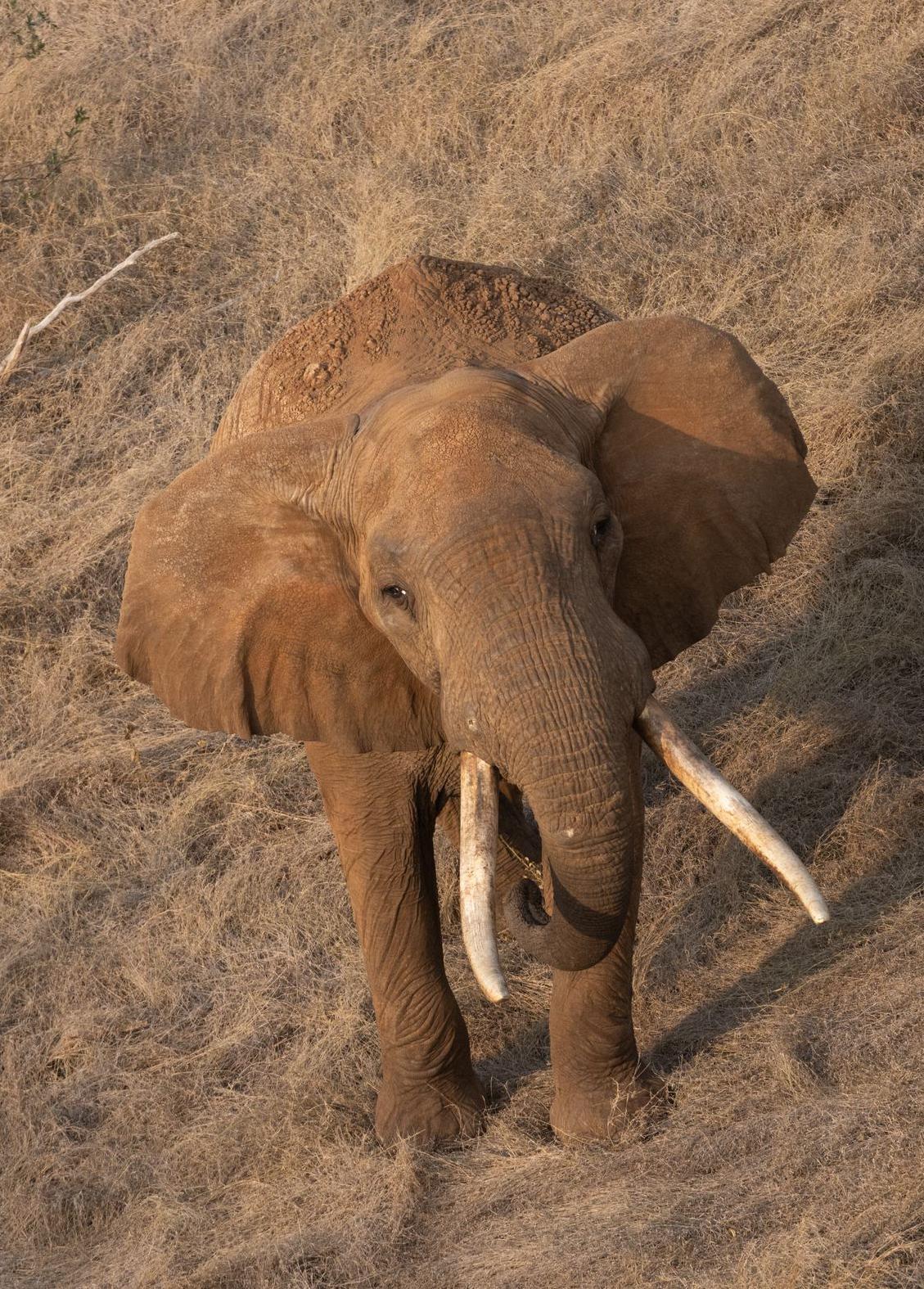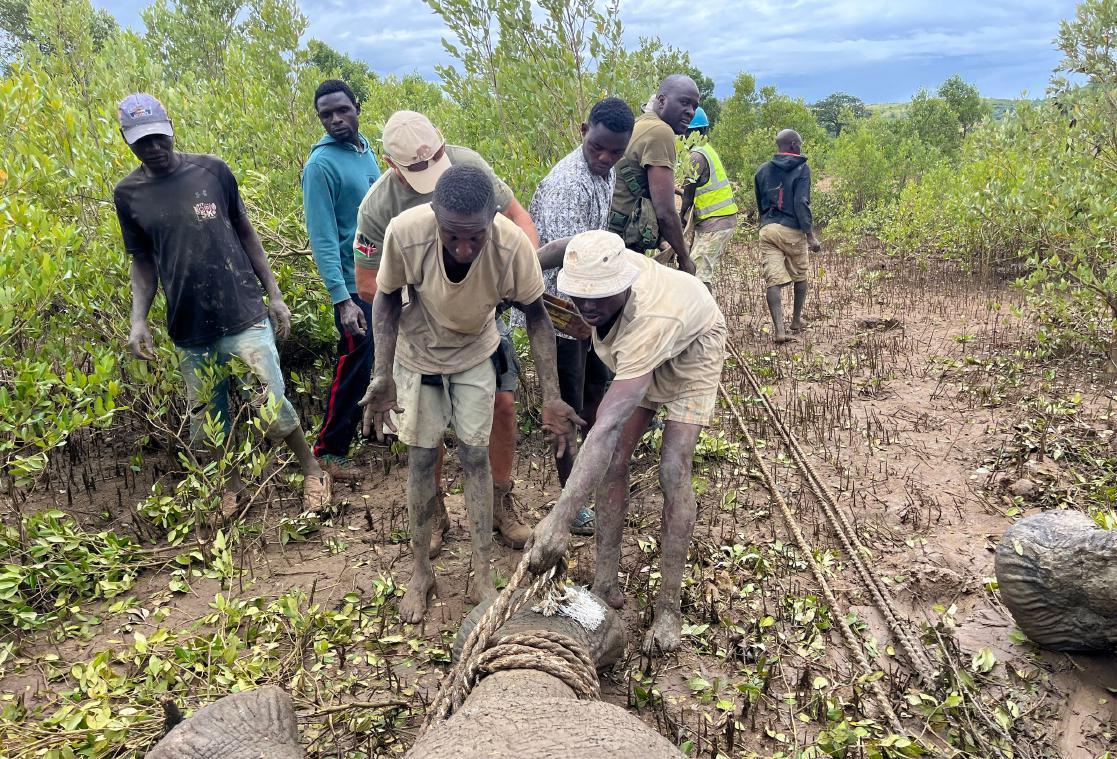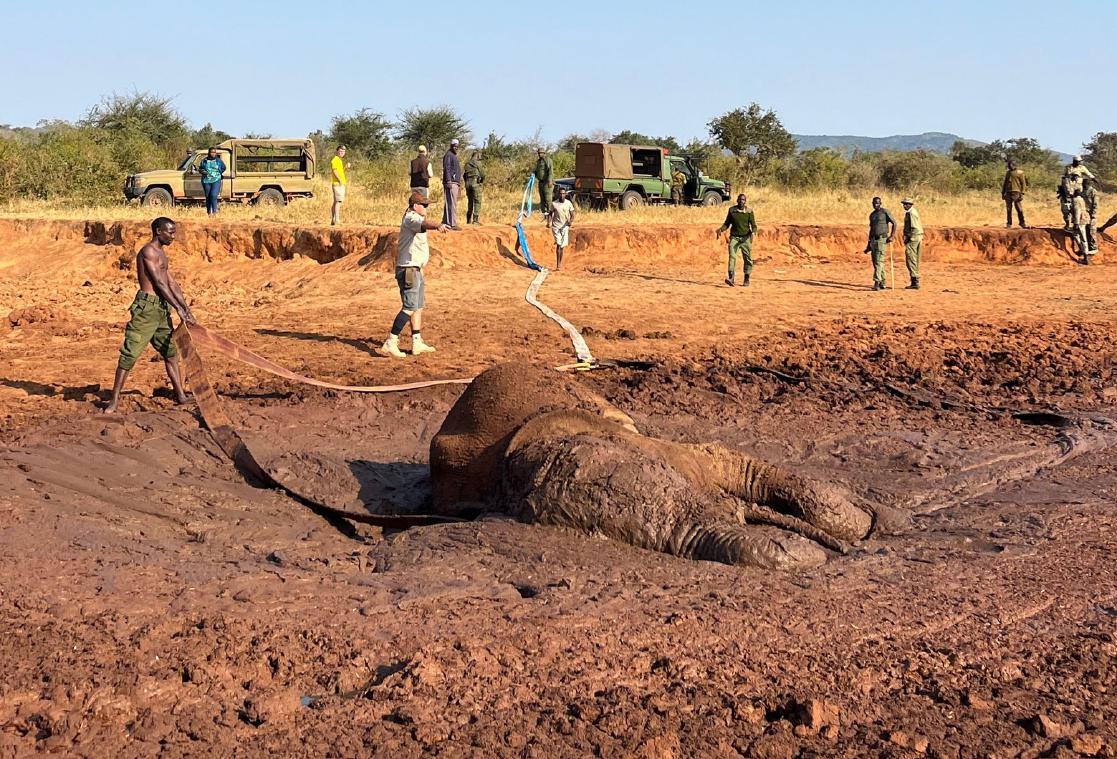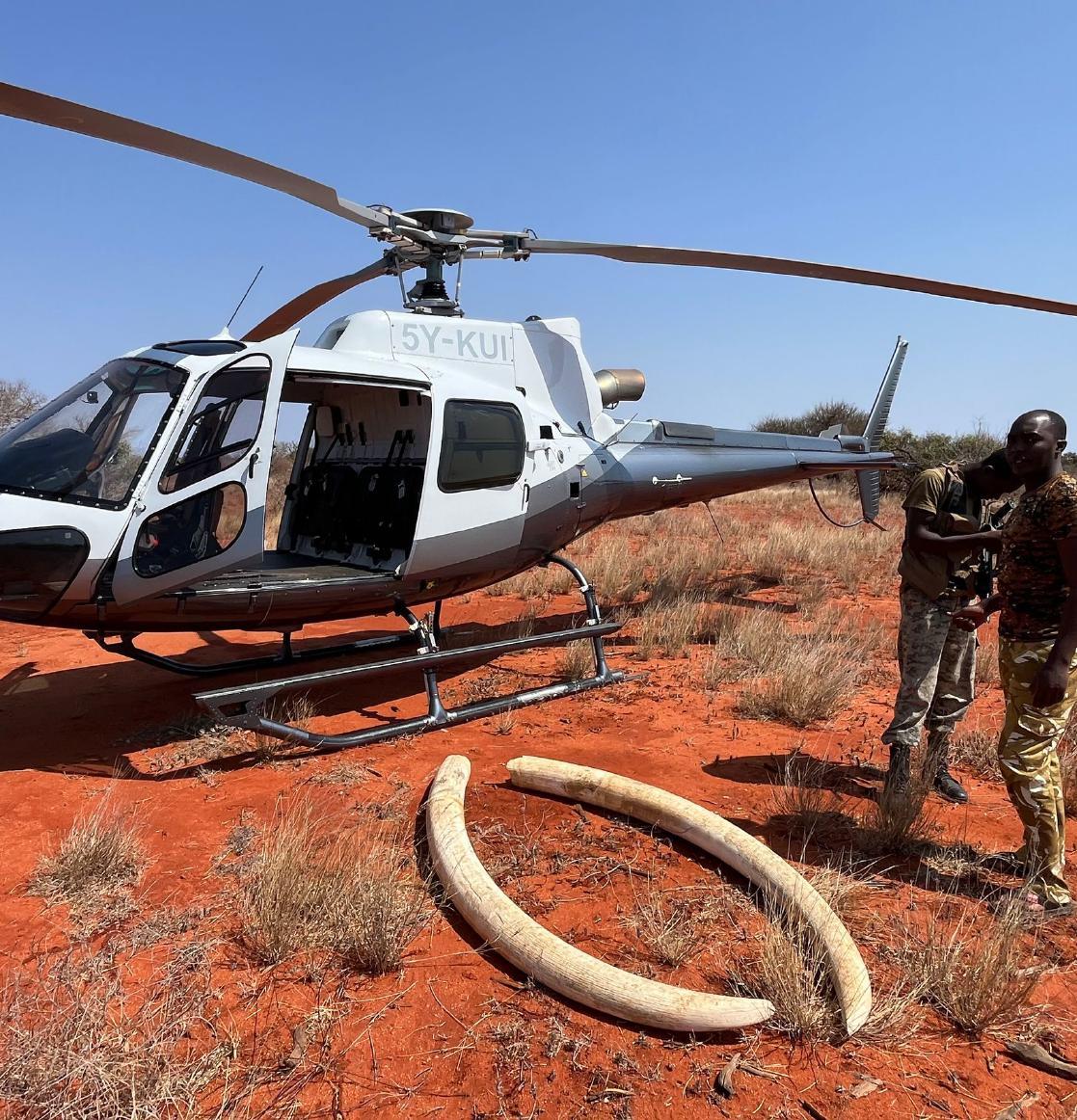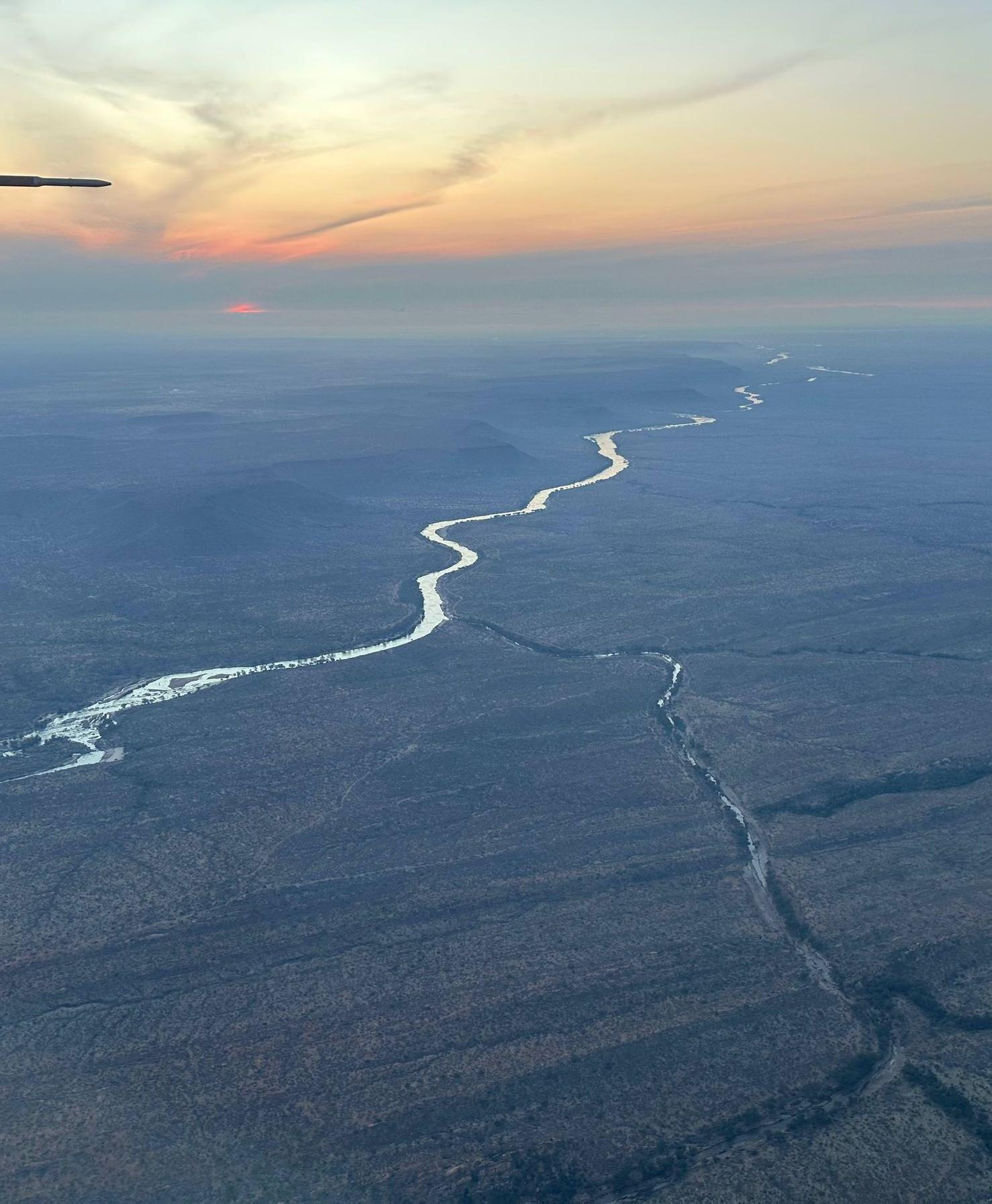AUGUST 2025
Aerial Unit Monthly Report
Operated in support of the Kenya Wildlife Service, Sheldrick Wildlife Trust's Aerial Unit monitors for illegal activity from the skies and offers rapid response assistance in anti-poaching operations, human-wildlife con�ict, veterinary treatments, orphan rescues, and all manner of �eld emergencies.
This report details Aerial Unit activities for August 2025
MONTH AT A GLANCE:
27,678
Hours �own: Areas patrolled:
227
Kilometres �own:
29,543
Tsavo East, Tsavo West, Chyulu Hills, KARI Ranch, Kishushe Ranch, Kulalu Ranch, Galana Ranch, Kutima Ranch, Kilifi Creek, Kipini Conservancy
AUGUST 2025 PATROL MAP:
The most challenging event in August was undoubtedly the rescue of two bull elephants trapped in deep mud in Kili� Creek at the coast. It appeared they had attempted to enter Arabuko-Sokoke Forest, only to �nd themselves stranded in farmland A group of farmers then chased them into Kili� Creek, where they sank deep into clay mud SWT responded with a helicopter, the Voi KWS/SWT Mobile Vet Unit, and ground teams
On the �rst day, the situation was fully assessed, and it became clear that a rescue would be extremely dif�cult, requiring signi�cant preparation A crowd of over 800 people had gathered around the elephants, which were 300 metres from the nearest �rm ground. The teams returned on day two with the strongest rope that could be sourced locally and then waited most of the day for a bulldozer to arrive. At 4 p.m., the �rst attempts began to pull the weaker of the two elephants out He was successfully extracted but was too weak, and sadly, despite the vet's best efforts, he died shortly after The second bull was too deeply entrenched, and the heavy-duty ropes snapped repeatedly with each attempt.
After yet another day, hundreds of metres of even stronger tow straps were �own from Kaluku Headquarters to Kili� in the Trust's Cessna Caravan. Even with these straps, it took several hours before the bull was �nally pulled free and helped to his feet. Weak, distressed by the lingering crowd, and reluctant to leave his dead companion, he refused to move out of the creek completely The helicopter was able, however, to guide him to slightly �rmer ground As darkness approached, the teams withdrew, hoping the bull would move away to safety Unfortunately, by morning the terrible news came that the crowd had chased him back into the creek.
Determined to save him, the teams returned once again He was given intravenous �uids for dehydration and extracted from the mud a second time, this time pulled fully onto solid ground Water was made available, and KWS and SWT rangers remained to protect him until he moved off under cover of darkness. The following day, he was tracked 26 kilometres away from the creek, seen drinking twice and browsing along the way. Despite the tragic loss of the �rst bull, the team's persistence was rewarded with this miraculous outcome
A less complicated case involved the helicopter rescuing an elephant stuck in mud at a man-made dam on Kutima Ranch. With the assistance of the Teita Sisal Estate and a JCB, the team successfully freed the elephant.
The Aerial Unit also assisted in the rescue of two orphaned elephants The �rst, a young calf, was spotted during a routine helicopter patrol, standing alone with no family in sight. A �xed-wing aircraft maintained aerial cover while another helicopter deployed a rescue team. The calf was safely �own back to our nursery for care. The second orphan, found with a severe hind-leg injury, was �rst reported by a vehicle The following day, a �xed-wing aircraft relocated the calf, which was then rescued by a ground team and transported to the Voi Stockade, where it received treatment.
During the �rst calf rescue, a bull elephant with a severe cable snare wound was also sighted A mobile vet was �own in by �xed-wing aircraft Despite severe tendon and ligament damage, the prognosis for recovery is good
In addition to this bull, six other vet cases were attended to with aerial support (including four elephants and two topi) Two elephants with arrow wounds were treated one by ground teams, one by helicopter after being sighted during aerial patrols. Two others, previously treated in March and April, required successful follow-ups. The two topi, reported on Kipini Conservancy with snare wounds, were treated over two visits: one darted and treated immediately, the other successfully darted on a return mission days later
The helicopter detected and responded to three poaching incidents during August. Teams discovered two poachers' camps during patrols one old, one recent, containing bedding, water containers, and 67 wire snares. In another case, two suspects were apprehended in Tsavo East after aerial suppression and a ground ambush In addition, teams also located two suspected honey-harvester camps
The helicopters were also called out for several other incidents. Two medical evacuations were conducted: one ranger struck by a rhino was �own to Karen Hospital in Nairobi, and another who was gored by a buffalo was airlifted to St Joseph's Hospital in Voi. The K9 Unit was also deployed by helicopter after a suspected arsonist burnt down a joint KWS/SWT ranger camp. The suspect, thought to be retaliating against livestock operations, was swiftly tracked and apprehended Finally, the helicopter assisted in extinguishing a subsurface �re in the Chyulu Hills Ground teams had struggled for days to put out the �re beneath a lava �ow, but 2,100 litres of water dropped by the SWT helicopter bambi bucket �nally quenched it.
Three other �res were surveyed or attended to by �xed-wing in southern Tsavo West One, a large bush�re originating in Tanzania, was spotted just before it crossed into Kenya. Thanks to the early detection and a rapid KWS response, the �re was contained before it spread far.
Aerial patrols detected three elephant carcasses (one recent, two old), and KWS recovered the ivory. One case in Tsavo East involved tusks so large that a helicopter was required to transport them each weighing 114 and 116 lbs. All three elephants are believed to have died of natural causes Teams also found a fresh rhino carcass in Tsavo West, scavenged by hyenas The horn was intact, and a postmortem con�rmed it had also died naturally
Other illegal activities observed included livestock incursions, charcoal burning (outside the parks), and logging for woodcarving, which later led to an arrest
Sightings during August included the usual charismatic cats of Tsavo, as well as multiple observations of a wild dog pack numbering over 30 individuals
The Aerial Unit, as with all Sheldrick Wildlife Trust's conservation projects, is a donorfunded initiative Thank you to our global supporters, who help us secure Kenya's habitats for the future and make an impact in the �eld, each and every day
